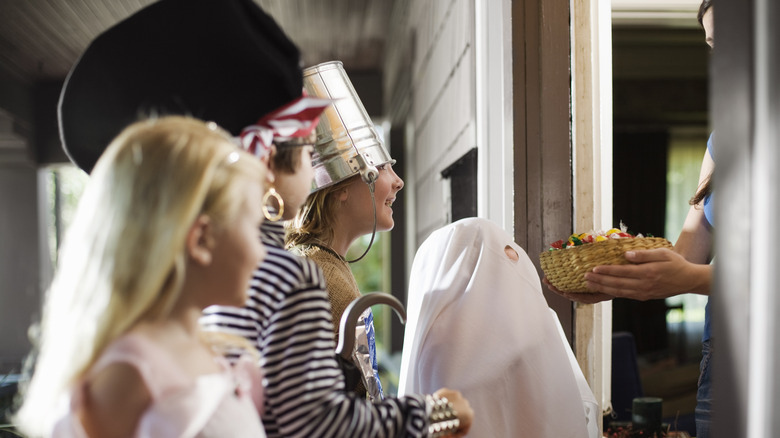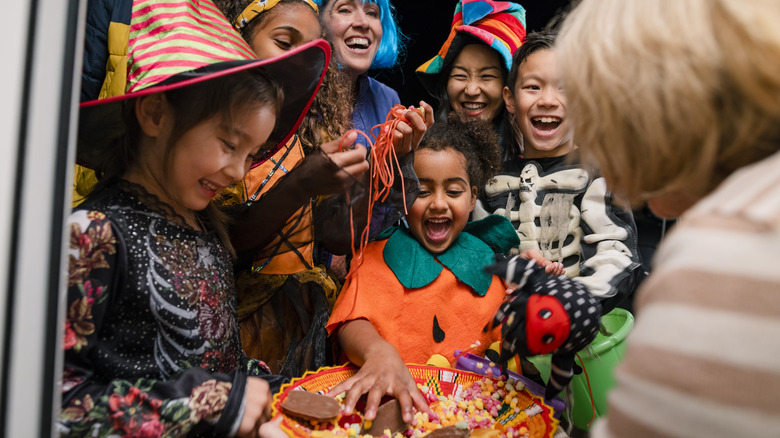How To Calculate The Exact Amount Of Halloween Candy You Need To Buy
It's officially spooky season, which means it's time to pick out your costume and make the annual pilgrimage to the candy aisle. Unless, of course, you plan to make your own candy this Halloween. The good news is that figuring out how much candy you need for trick-or-treaters doesn't need to be tricky: There's an easy way to calculate the exact amount of treats you need to purchase, so no child has to leave empty-handed.
Released in 2021, the handy candy calculation is the brainchild of leading food company and confectionery giant Mars Wrigley and same-day delivery service Shipt. The duo developed their very own formula for predicting how many bags of sugary delights each household will need.
Calculating the equation is easy: Multiply the time you'll spend passing out candy (in hours) times the number of kids you expect to knock times how many pieces you'll give to each child (per Shipt). Once you have the hours and kids sorted, you can figure out how much additional candy you'll need to buy. Multiply how many days until Halloween times your household size times the average number of pieces each family member will eat per day. Add the two numbers together and divide that amount by how many pieces of candy are contained per package. For example, if you're buying 30-piece bags of candy, you would divide the number by 30. It's important to note that if rain is expected, you should divide the total of everything by 1.5.
Here's the trick-or-treat cheat sheet
The only thing worse than buying too much Halloween candy is buying too little. But, with a little arithmetic, you can easily determine the perfect amount of candy. This way, you're not stuck eating leftover Halloween candy or running out of ghoulish treats to hand out to adorably dressed kiddos halfway through the night.
To really understand the math behind the madness, let's take a look at a fictional person named Sam. Sam expects there will be seven trick-or-treaters per hour, and they plan on leaving the light on from five o'clock to nine, so four hours — but the forecast also predicted rain. They will give each child two pieces of candy. Sam buys their candy four days before Halloween, but it's only Sam and their partner in the household. Sam knows they will each eat two pieces of candy a day.
Now, let's plug all of that into the equation. So we multiply the hours by the number of tricker-treaters by the amount of candy Sam will pass out (56). Then we factor in how much Sam and their partner will eat (16 pieces total), and now we add the two numbers together to get 896. Now, we divide by 30, the average bag size, to get about 30. That would normally be 30 bags needed, but because of rain, we divide by 1.5 and know that Sam needs 20 bags.


